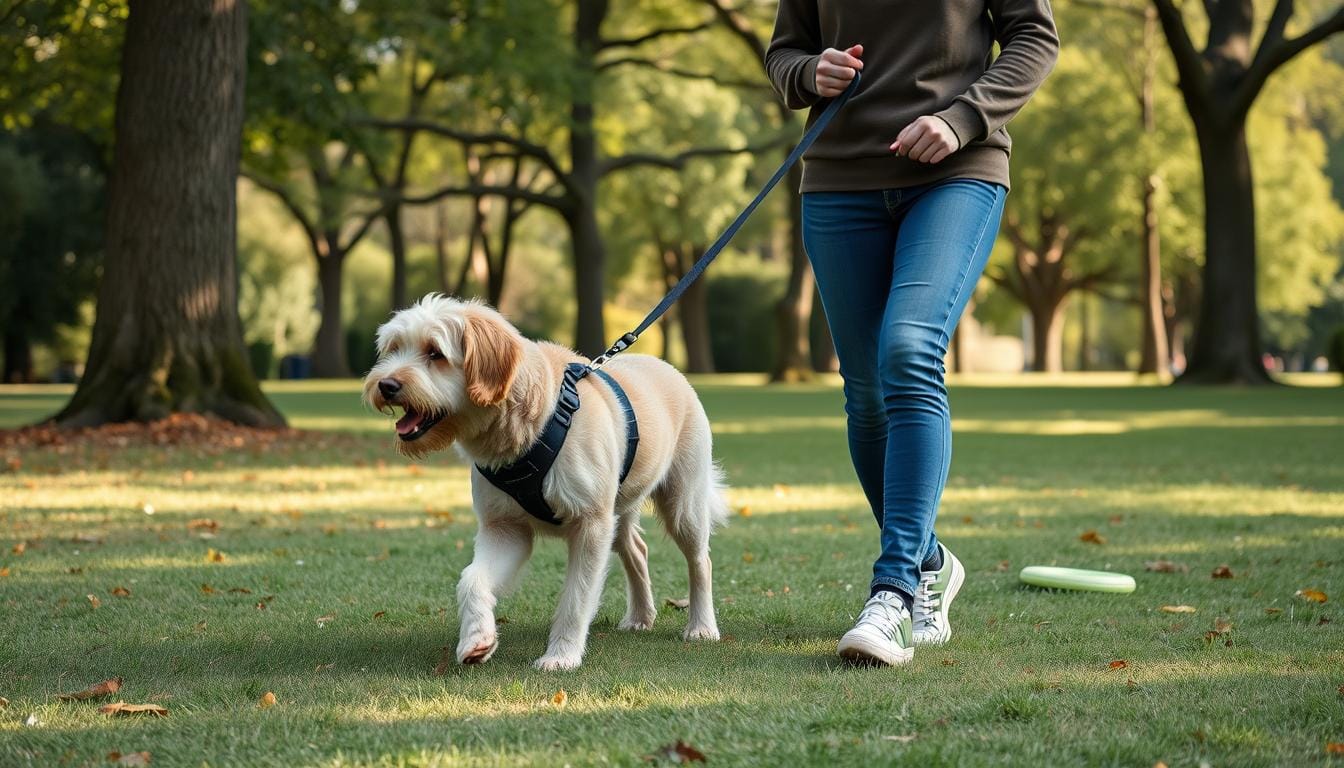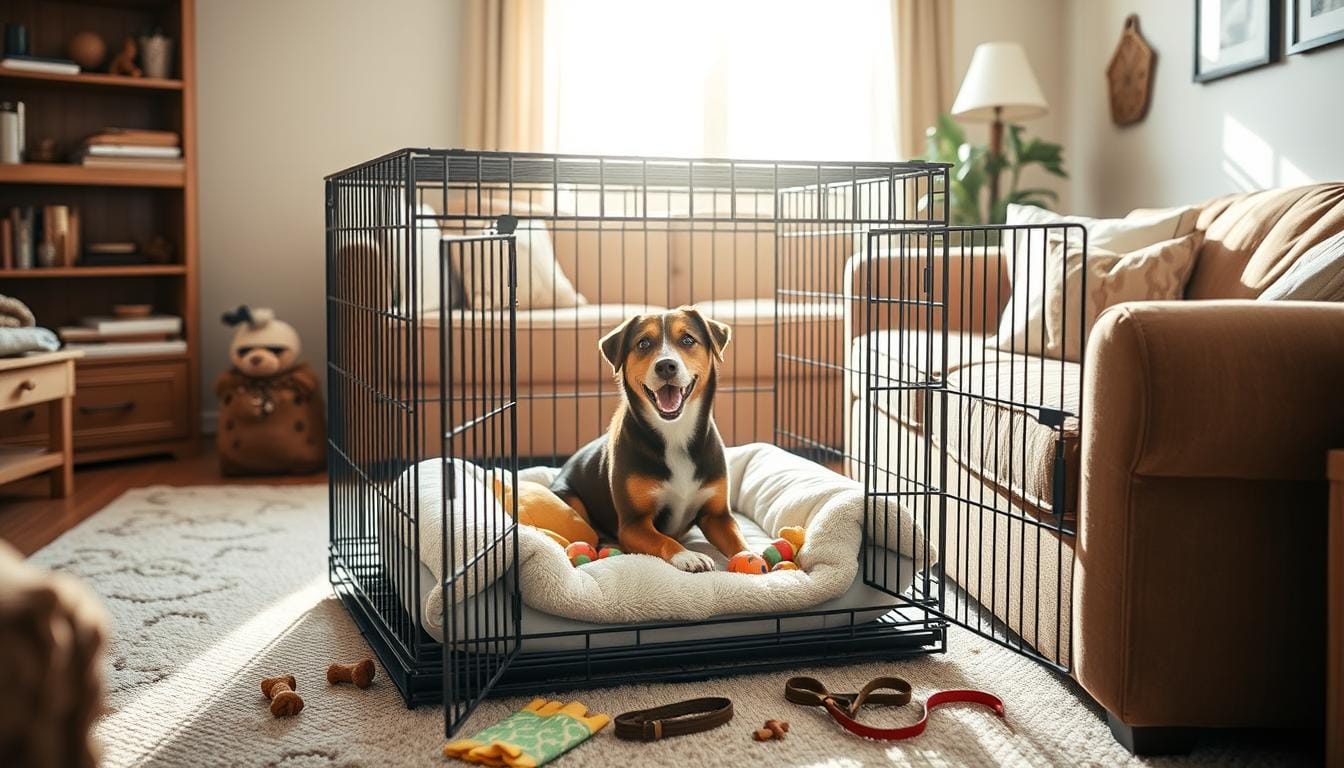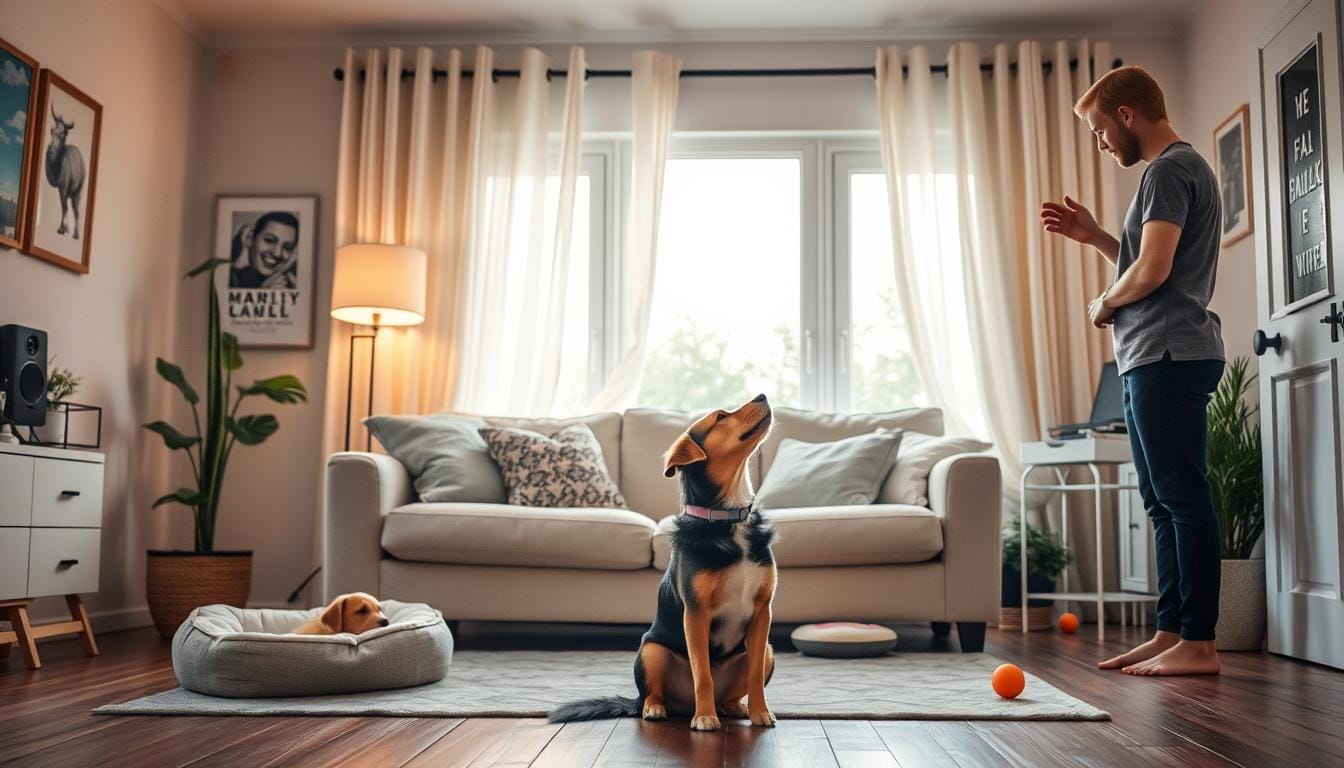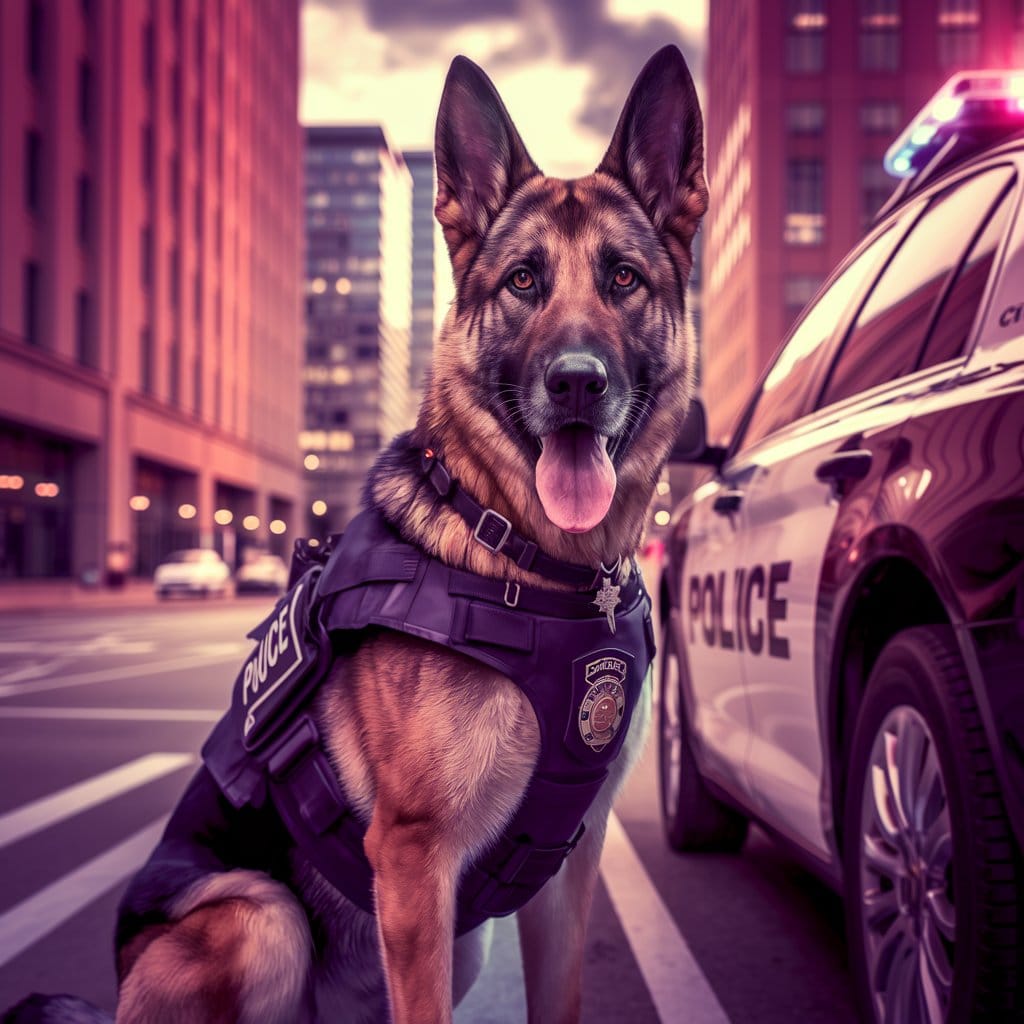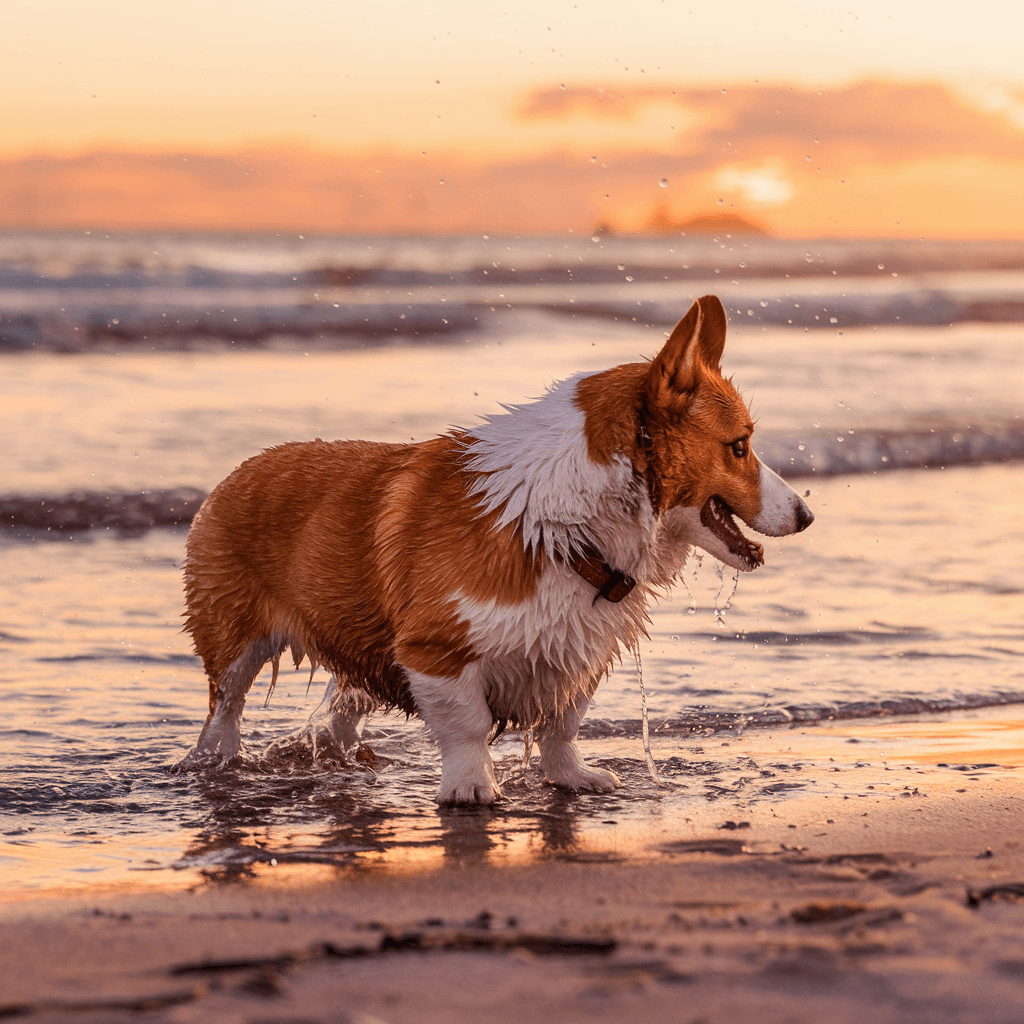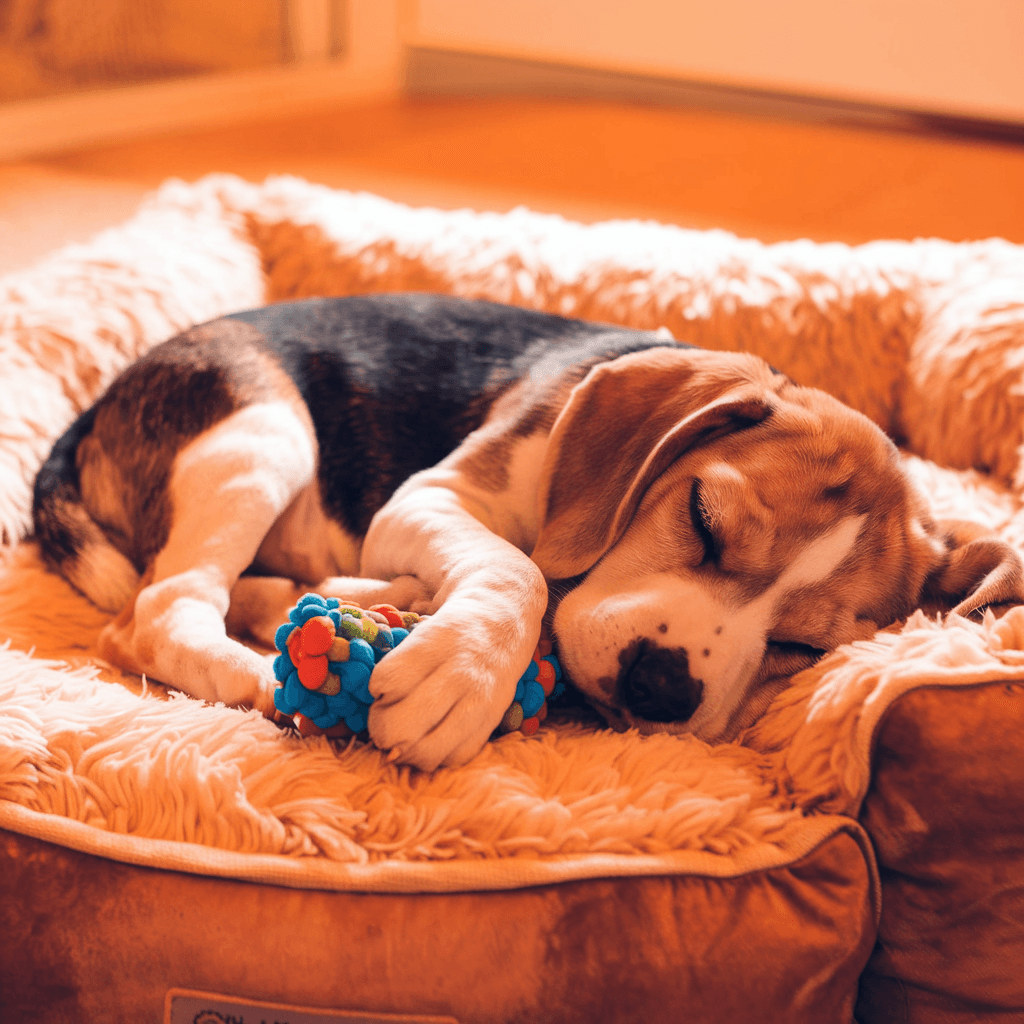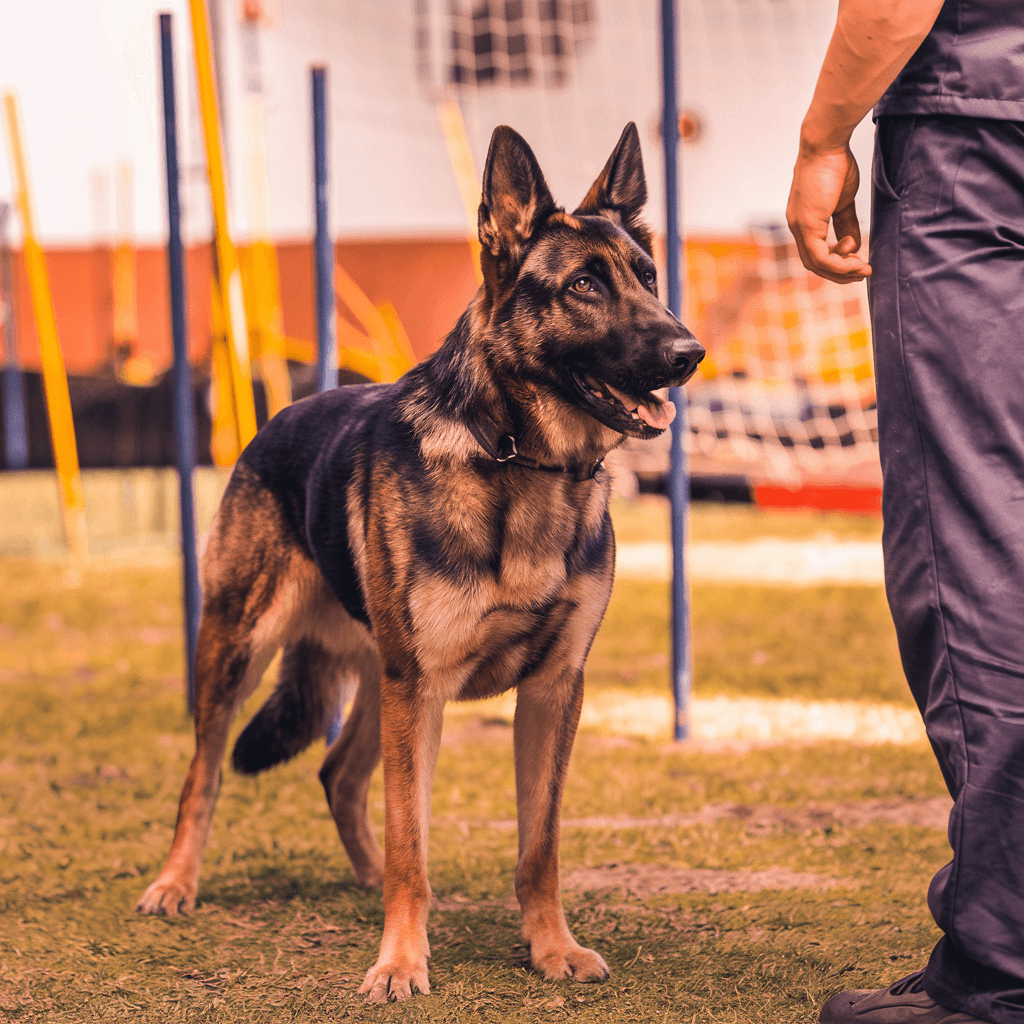Did you know a well-trained puppy is more likely to form a stronger bond with you? Start training today and build that bond! As new dog owners, we often find ourselves overwhelmed with the joys and challenges of puppy training. The American Kennel Club recommends starting puppy training as early as eight weeks old, focusing on basic obedience commands like sit, stay, down, and come.
Positive reinforcement is the gold standard in puppy training, with almost all vets agreeing on its effectiveness. We’ve found that short, five-minute training sessions repeated throughout the day yield the best results. This approach keeps our furry friends engaged without overwhelming them.
Consistency is key in dog behavior development. Using the same words and hand signals for cues helps puppies learn faster. We’ve seen that practicing in different environments builds confidence in our pups, preparing them for various real-world situations.
Remember, every puppy learns at their own pace. Patience is crucial as we guide our new companions through their training journey. With the right approach, we can lay the foundation for a well-behaved, happy dog that brings joy to our lives for years to come.
Key Takeaways
- Start puppy training as early as 8 weeks old
- Use positive reinforcement for effective learning
- Keep training sessions short, around 5 minutes each
- Be consistent with commands and household rules
- Practice patience as puppies learn at different speeds
- Socialize your puppy to prevent future behavioral issues
- Consider professional help for enhanced training outcomes
Understanding the Importance of Early Puppy Training
Early puppy training is key to shaping your furry friend’s behavior. We’ll see why starting training right away is vital. It greatly benefits your puppy’s long-term growth.
Why training should start immediately
The first few months of a puppy’s life are crucial. Weeks 8 to 16 are especially important. During this time, puppies learn to tell safe from scary situations.
Starting training at 8-10 weeks helps with basic tasks. These include name recognition, potty training, and crate training.
Benefits of early training for long-term behavior
Early puppy training lays the groundwork for a well-behaved adult dog. It prevents problem behaviors and strengthens your bond with your pup. Positive reinforcement methods lead to dogs that are less likely to show fearful, aggressive, or attention-seeking behaviors.
“Positive reinforcement training is the most effective method for achieving desired behaviors in puppies.”
Setting realistic expectations for your puppy
Knowing your puppy’s developmental stages is crucial. Here’s what to expect at different ages:
| Age | Training Focus |
|---|---|
| 8-10 weeks | Name recognition, potty training, crate training |
| 10-12 weeks | Leash introduction, impulse control, threshold training |
| 3-4 months | Stay, Leave It commands, socialization with other dogs |
| 4-6 months | Advanced cues in distracting settings, recall for off-leash walking |
| 6 months to 1 year | Reinforcing basics, challenging with distractions, maintaining routines |
Remember, every puppy is unique. Be patient and consistent in your training. This will help your furry friend reach their full potential.
Creating a Positive Training Environment
A positive puppy training environment is key to success. We use fun and effective reward-based training. This makes learning a joy for your puppy. It also helps them feel safe to explore and learn new things.

Timing is everything in puppy training. Rewards should be given right after the good behavior. This helps puppies quickly learn what actions get them positive results.
Verbal cues are very important in puppy training sessions. We teach simple commands like “sit,” “stay,” and “come.” It’s important for everyone in the family to use the same commands to avoid confusion.
Training sessions should be short, about 10 minutes. This keeps your puppy’s attention and keeps them interested in learning. A positive training environment is essential for a well-behaved and happy dog.
- Use treats, toys, or favorite games as rewards
- Praise and pet your puppy for good behavior
- Gradually reduce treat frequency as behaviors become reliable
- Consider using a clicker for more precise training
Creating a positive training environment helps build a strong bond with your puppy. This method teaches good behaviors and builds trust and confidence in your furry friend.
Establishing a Consistent Routine for Your Puppy
A well-structured puppy routine is key to raising a happy, well-behaved dog. It makes your furry friend feel secure and confident in their new home.
Importance of Scheduling Meals, Walks, and Playtime
Creating a daily routine for your puppy is crucial. Set regular times for meals, potty breaks, and playtime. This consistency helps prevent accidents and behavioral issues. A structured day also aids in housebreaking efforts.
How Routine Builds Confidence and Reduces Anxiety
A consistent schedule helps puppies feel secure in their environment. Knowing what to expect reduces anxiety and builds confidence. Studies show that 85% of new puppy owners see significant improvement within the first month of using a reward-based training routine.
Incorporating Training Sessions into Daily Activities
Integrate daily training into your puppy’s routine. Short, frequent sessions are more effective than long, infrequent ones. Use everyday activities as training opportunities to reinforce good behavior.
| Time | Activity | Training Opportunity |
|---|---|---|
| 7:00 AM | Wake up & Potty | Practice “Go Potty” command |
| 7:30 AM | Breakfast | Teach “Sit” and “Stay” before meal |
| 12:00 PM | Lunch & Walk | Work on leash training |
| 5:00 PM | Playtime | Practice “Come” and “Drop it” |
| 8:00 PM | Bedtime Routine | Reinforce crate training |
Remember, consistency is key in puppy training. Stick to your routine, be patient, and watch your puppy thrive!
Puppy Training Tips, Dog Behavior, New Dog Owners, Positive Reinforcement, Puppy
Training a puppy needs patience, consistency, and the right way. We’ve got key puppy training tips and dog behavior management strategies for new owners. This will help you on your exciting journey.

Positive reinforcement is key in puppy training. It means rewarding good behavior to make it happen again. Positive reinforcement training can be treats, praise, or playtime.
It’s important to understand dog behavior for new owners. Puppies talk through body language and sounds. Knowing these signals helps solve problems and makes your bond stronger.
“Timing is everything in positive reinforcement. Reward your puppy right after they do what you want to show them it’s good.”
Here’s a look at popular puppy training methods:
| Training Method | Effectiveness | Best For |
|---|---|---|
| Positive Reinforcement | High | Most puppies |
| Clicker Training | Medium-High | Food-motivated puppies |
| Balanced Training | Medium | Older or stubborn puppies |
Every puppy is different. What works for one might not work for another. Try different methods and be patient as you and your puppy learn together.
Housebreaking: Teaching Your Puppy Where to Go
Puppy housebreaking is key to raising a well-behaved dog. It needs patience, consistency, and knowing your puppy’s needs. Let’s look at good ways to housebreak and prevent accidents.
Setting up a designated potty area
Find a special spot outside for your puppy to go. This spot should be the same every time. Take your puppy there often, like after meals, naps, and play.
Recognizing signs your puppy needs to go
Look for signs your puppy needs to go, like sniffing or whining. Puppies need to go out every 1-2 hours when awake. Remember, a puppy can hold its bladder for about one hour per month of age.
Reward-based techniques for successful housebreaking
Positive reinforcement is important in potty training. Praise and treat your puppy right after they go in the right spot. This helps them learn to do it again. Don’t punish accidents, as it can confuse your puppy and slow down their learning.
| Puppy Age | Potty Break Frequency | Max Time Between Breaks |
|---|---|---|
| 8 weeks | Every 1-2 hours | 3 hours |
| 12 weeks | Every 2-3 hours | 4 hours |
| 16 weeks | Every 3-4 hours | 5 hours |
| 20 weeks | Every 4-5 hours | 6 hours |
Being consistent is key in housebreaking your puppy. With patience and the right methods, most puppies can learn in one to two weeks. But remember, every puppy is different, and some might take 4-6 months to learn.
Crate Training: A Safe Haven for Your Puppy
https://www.youtube.com/watch?v=kqV4PQNJ8lI
Crate training gives your puppy a safe place and helps with housebreaking. Start early to make the crate a positive spot. Puppies under six months should not be crated for more than three to four hours.
Choose a crate that lets your puppy stand, turn, and lie down easily. You can pick from plastic kennels, fabric crates, or metal pens. Some crates grow with your puppy.
Introduce the crate slowly:
- Put treats inside to get them curious
- Feed meals near the crate, then inside
- Start with short times and increase slowly
- Use a command like “kennel up” for entering
Make the crate a good place. Never punish your puppy in it. Crate your puppy at night, first in your room, to help with toilet training and reduce anxiety. Use it for short times during the day when you can’t watch them.
“A crate provides a den-like space where puppies feel secure and learn to control their bladder and bowels.”
Remember, crate training takes time. It might take days or weeks, based on your puppy’s age and personality. Be patient and consistent for successful training and a safe space for your puppy.
Socialization: Introducing Your Puppy to the World
Puppy socialization is key to raising a well-adjusted dog. Start this process early, ideally before your puppy is 16 weeks old. This early stage is crucial for shaping their future behavior and interactions.
Importance of Early Socialization
The socialization period for puppies is between 3-12 weeks old. During this time, they are most open to new experiences. Proper socialization helps them become comfortable with different sights, sounds, and smells. This sets the stage for a confident adult dog.
Safe Ways to Expose Your Puppy to New Experiences
Before starting socialization, make sure your puppy has had their first vaccines and deworming. Once vaccinated, it’s safe to introduce them to new people. For dog-to-dog interactions, wait until they’re about 16 weeks old. Try to expose your puppy to social activities at least two to three times a week until they’re 6 months old.
Building Positive Associations
Creating positive associations with new experiences is crucial. Gradually increase the time and intensity of socialization. Watch for signs of stress, like panting or hiding. If your puppy seems stressed, take a break. Remember, consistency is key in puppy socialization.
By following these guidelines, we can help our puppies grow into well-socialized, confident adult dogs ready to face the world.
Teaching Basic Commands: Sit, Stay, Come
Basic obedience is key for a well-behaved puppy. We can start teaching puppy commands at 8 weeks old. Short, frequent sessions are best for obedience training. Let’s learn how to teach your furry friend the essential commands: sit, stay, and come.
Keep training sessions short, about 5 to 10 minutes. This matches a dog’s focus span and avoids frustration. Use positive reinforcement with treats like freeze-dried liver to make learning fun.
To teach “sit,” use the capturing or luring method. Avoid pushing your puppy into position. For “stay,” start with short times and increase them. Teach “come” in a quiet indoor area to avoid distractions.
Consistency is key in obedience training. Use a firm, low-tone voice for commands. As your puppy gets better, practice these commands in different places to reinforce learning:
- During meal times
- Before going for walks
- When greeting visitors
With patience and regular practice, your puppy will learn these basic commands. This will set a strong foundation for more advanced training later.
Preventing Destructive Chewing and Biting
Puppy chewing is natural but can be harmful if not managed. We’ll look at ways to stop this and teach your puppy to chew right. This way, they’ll learn good manners.
Providing appropriate chew toys
It’s important to give your puppy the right chew toys. Only 36% of new dog owners give their pets special chew toys. This can cause confusion and bad chewing habits.
- Choose durable, puppy-safe toys
- Rotate toys regularly to maintain interest
- Use puzzle toys to stimulate mental activity
Redirecting unwanted chewing behavior
If you see your puppy chewing on something wrong, gently show them a good toy. About 41% of dog owners succeed by swapping bad items for toys with treats. This rewards good behavior.
Teaching bite inhibition
Bite inhibition is key for puppies. It means teaching them to control their bite. Start by letting them mouth gently, but stop play if they bite too hard. This shows them that hard play ends the game.
| Behavior | Recommended Action | Success Rate |
|---|---|---|
| Gentle mouthing | Continue play | 85% |
| Hard biting | End playtime immediately | 78% |
| Persistent chewing on furniture | Redirect to chew toy | 69% |
Consistency is crucial in stopping bad chewing and teaching bite control. With patience and rewards, your puppy will learn to chew right and play gently.
Leash Training: Walking Nicely Without Pulling
Leash training is a key skill for new puppy owners. Many dogs find it hard to walk without pulling, making walks a challenge. Our data shows most clients join classes because of pulling, reactivity, and too much sniffing.
Start leash training early. Short, frequent sessions are best for puppies. Use treats and praise when they walk nicely beside you. Start in quiet areas and make it harder as they get better.
Being consistent is crucial. Our stats show owners see big improvements by the fourth class. Record your sessions and ask for feedback to get better. Leash training is like learning a new sport – it takes time and patience.
Tools like front-hook harnesses can help with pulling, but training is key. Teach your puppy to focus on you during walks. With time and practice, walks will be stress-free, and you’ll bond with your puppy.







